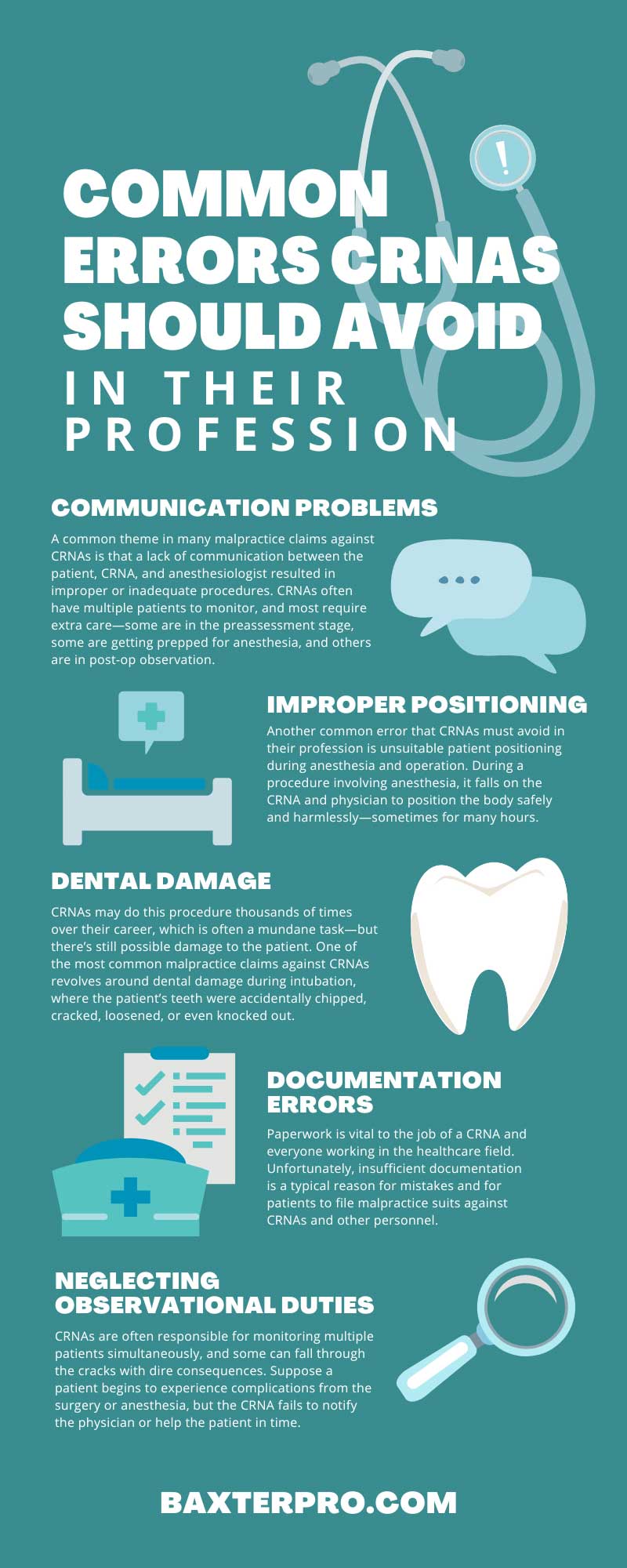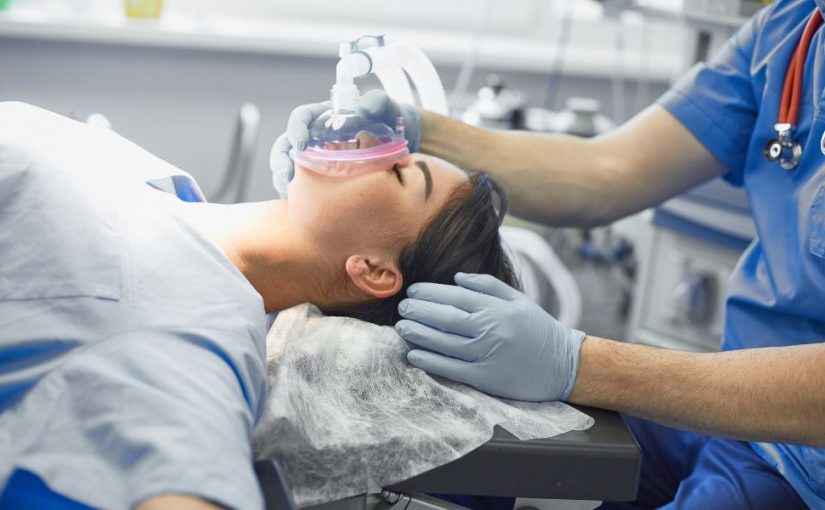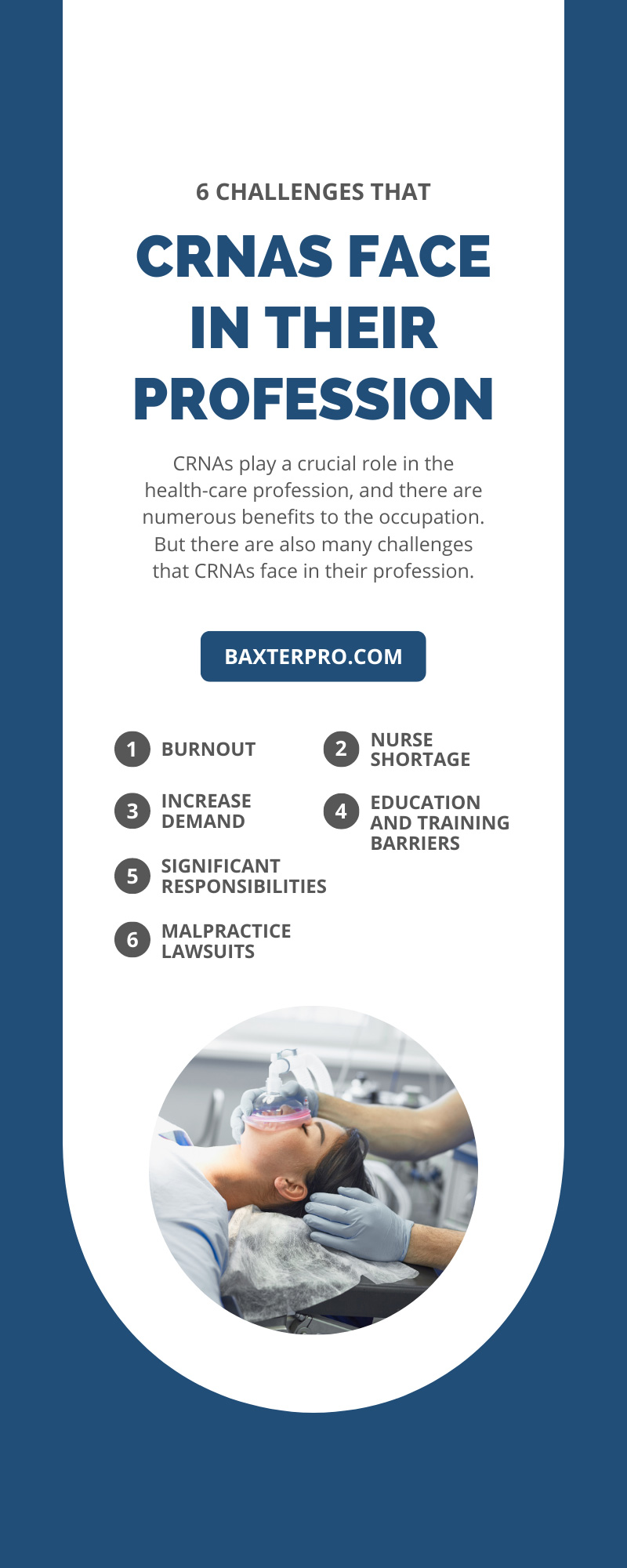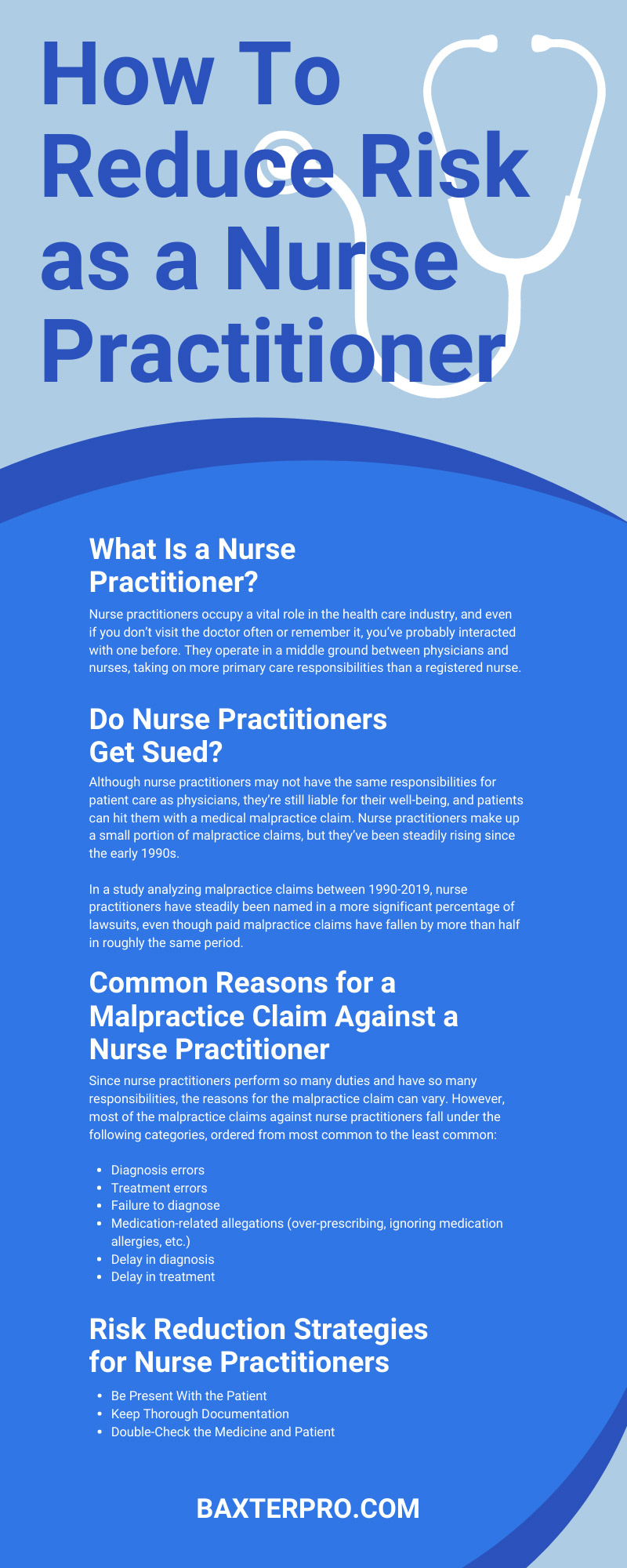A nurse practitioner is an essential job in the health care industry with many responsibilities, but with those responsibilities comes risk. Nurse practitioners play a critical role in providing patient care and improving health outcomes. However, with this important role comes significant responsibility, including the need to mitigate risks that can lead to medical errors, malpractice claims, and other adverse outcomes. Medical malpractice claims are part of working in healthcare, so to help, we’ve put together a guide on the duties, malpractice claim reasons, and how to reduce risk as a nurse practitioner.
What Is a Nurse Practitioner?
Nurse practitioners occupy a vital role in the health care industry, and even if you don’t visit the doctor often or remember it, you’ve probably interacted with one before. They operate in a middle ground between physicians and nurses, taking on more primary care responsibilities than a registered nurse.
Nurse practitioners are helpful in regions with a high volume of patients or a low number of physicians. They can take some of the load off of physicians by administering primary care to more manageable patients and fill in communities where there aren’t many physicians for the residents.
Interesting Stat: Americans make over a billion visits to nurse practitioners every year.
Responsibilities of a Nurse Practitioner
A nurse practitioner has many responsibilities, with about 70 percent of them providing primary care for patients. In many areas in the country, a nurse practitioner is the closest thing to a physician a community can offer.
As part of primary care, nurse practitioners are responsible for:
- Ordering, performing, and analyzing lab work and x-rays
- Prescribing and administering medications
- Diagnosing and treating chronic conditions (diabetes, infections, physical ailments, etc.)
- Educating patients on healthy lifestyle choices
- Managing overall patient care
That’s just a brief description of the duties a nurse practitioner can perform in their role. It also varies in the facility, other staff, and specialty they practice.
Areas Nurse Practitioners Practice
A nurse practitioner has a broad set of skills that apply to almost any specialty in healthcare. Some of the most popular practices nurse practitioners specialize in include:
- Acute care
- Adult health
- Family health
- Oncology
- Pediatrics
- Emergency
Do Nurse Practitioners Get Sued?
Can you sue a nurse practitioner? Although nurse practitioners may not have the same responsibilities for patient care as physicians, they’re still liable for their well-being, and patients can hit them with a medical malpractice claim. Nurse practitioners make up a small portion of malpractice claims, but they’ve been steadily rising since the early 1990s.
In a study analyzing malpractice claims between 1990-2019, nurse practitioners have steadily been named in a more significant percentage of lawsuits, even though paid malpractice claims have fallen by more than half in roughly the same period.
In 2019, 420 malpractice claim payments were made on behalf of nurse practitioners—the highest number on record. But, considering there are over 350,000 nurse practitioners in the country, it’s not exactly typical for one to get sued.
Cost of a Medical Malpractice Claim Against Nurse Practitioners
There may be a relatively low number of paid medical claims against nurse practitioners, but they’re still noteworthy and worth taking preventive measures against. The average cost of a paid claim against a nurse practitioner is over $350,000.
If you don’t have professional liability insurance for nurse practitioners, the cost of paying the claim could significantly hamper your finances and limit your career. Like anything else, it’s better to be safe than sorry with insurance.
Common Reasons for a Malpractice Claim Against a Nurse Practitioner
Since nurse practitioners perform so many duties and have so many responsibilities, the reasons for the malpractice claim can vary. However, most of the malpractice claims against nurse practitioners fall under the following categories, ordered from most common to the least common:
- Diagnosis errors
- Treatment errors
- Failure to diagnose
- Medication-related allegations (over-prescribing, ignoring medication allergies, etc.)
- Delay in diagnosis
- Delay in treatment
Medication-related allegations and errors have risen the most due to the ongoing opioid epidemic that damaged many parts of the country. In the previous decade or so, medication allegations have nearly doubled. Because nurse practitioners are responsible for prescribing drugs like opioids in many cases, they can be held accountable in some instances of addiction.
Medication Administration
The opioid epidemic has been one of the most significant and damaging developments in the healthcare industry in the 21st century. The over-prescribing of an opioid is a common complaint filed against nurse practitioners. However, such claims typically focus on the manufacturers and sellers rather than the physicians and nurse practitioners.
Medication-related allegations aren’t limited to just overprescribing. Sometimes the incorrect amount is prescribed to a patient, or a nurse practitioner prescribes them a drug they’re allergic to. Some claims are as simple as the wrong medication being administered to the wrong patient—basic errors that can slip through the cracks.
Diagnosis Errors
There are different kinds of negligence that can affect nurse practitioners and other clinicians. The most common malpractice complaint against nurse practitioners is diagnosis errors. As most nurse practitioners administer primary care, this means ordering tests, analyzing, and coming up with a diagnosis.
They’re rare, but mistakes happen, and sometimes an X-ray is misread, or a diagnosis takes too long, and it’s too late to give adequate treatment.
Risk Reduction Strategies for Nurse Practitioners
There’s a risk for nurse practitioners, but there are ways to reduce risk as a nurse practitioner against medical malpractice claims. Risk reduction strategies often come down to open communication with the patient and proper documentation.
Be Present With the Patient
A common refrain from patients about nurse practitioners—and physicians, nurses, and other medical professionals—is that they didn’t feel heard or understood. Nurse practitioners typically have a lot of patients, and when the waiting room fills up with anxious patients, it can get distracting and difficult to give everyone the time they need.
But it’s still paramount that nurse practitioners give the patient their full attention. Explain their diagnosis, treatment, symptoms, and medication as plainly to them as possible, and give them adequate space and time to ask questions.
Sometimes, a patient or family member wants to blame someone for a negative outcome, and if they feel they weren’t treated respectfully, they might choose the nurse practitioner.
Keep Thorough Documentation
Proper documentation is vital in health care—every nurse practitioner and medical professional knows this. It can be a chore, but you should never take shortcuts when promptly filling out proper documentation with precise detail.
The documentation gives us a clear, written timeline of the patient’s admittance, symptoms, treatment, tests, and other important information. Since most claims occur years after the patient’s treatment, this information is essential to understanding what happened. When your career and finances are at stake, you’ll be thankful you were as detailed as possible.
Make Personal Notes
Along with the official documentation, it’s not a bad idea to keep a personal log and journal of patient notes handy. In personal notes, you can be more detailed and add more info than may be needed on the patient’s documentation.
Especially if you feel a patient interaction was hostile or antagonistic, it’s a good idea to start keeping notes sooner rather than later, just in case.
Double-Check the Medicine and Patient
Over a day, a nurse practitioner can fill out and administer dozens of medical prescriptions. With such a high volume every day, mistakes are bound to happen—the wrong patient receives the incorrect medicine, or it’s the wrong amount, or even given at the wrong time.
It’s easy to become complacent, but the best advice to avoid these possible critical errors is to do what carpenters do—measure twice and cut once. Always double-check the drug, dosage, and patient to be 100% certain, even if it means losing a couple of minutes every day.
Like other clinicians, nurse practitioners need malpractice insurance. To learn more about the average cost of malpractice insurance, contact Baxter & Associates today.



















